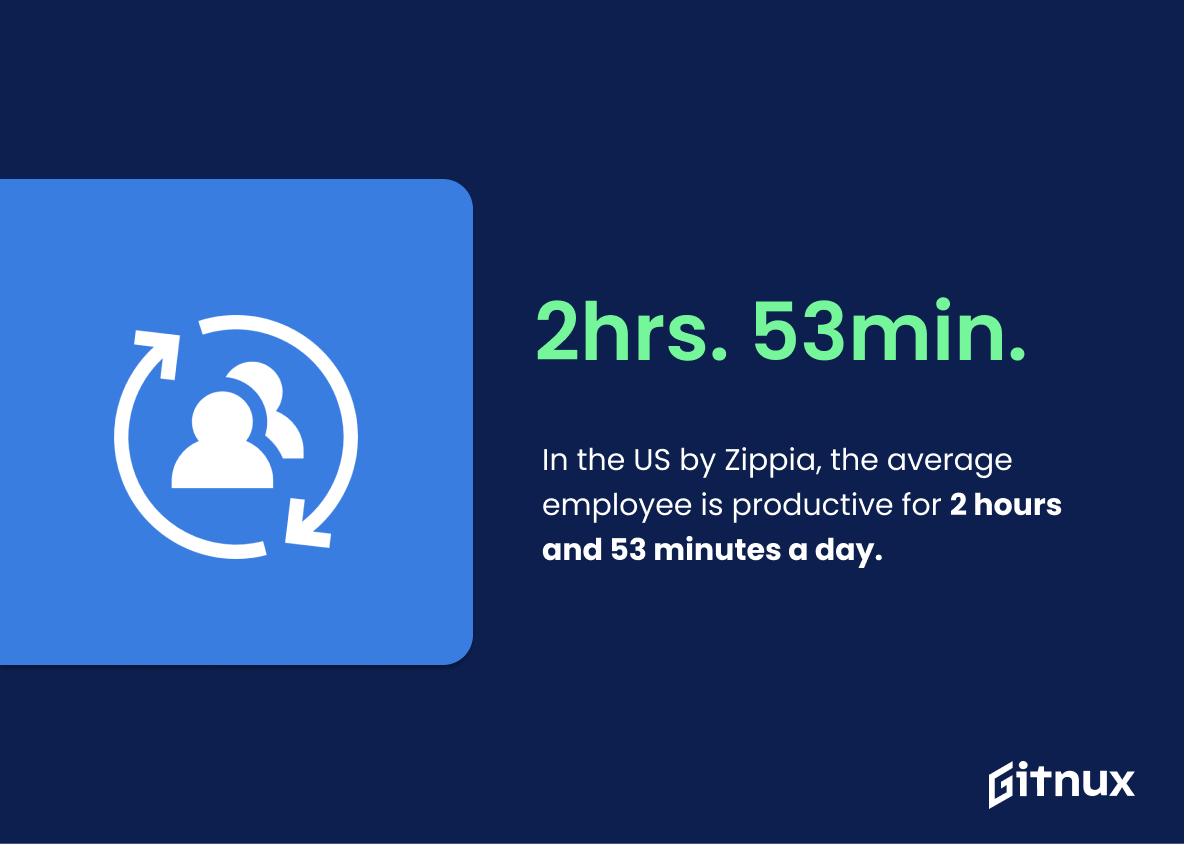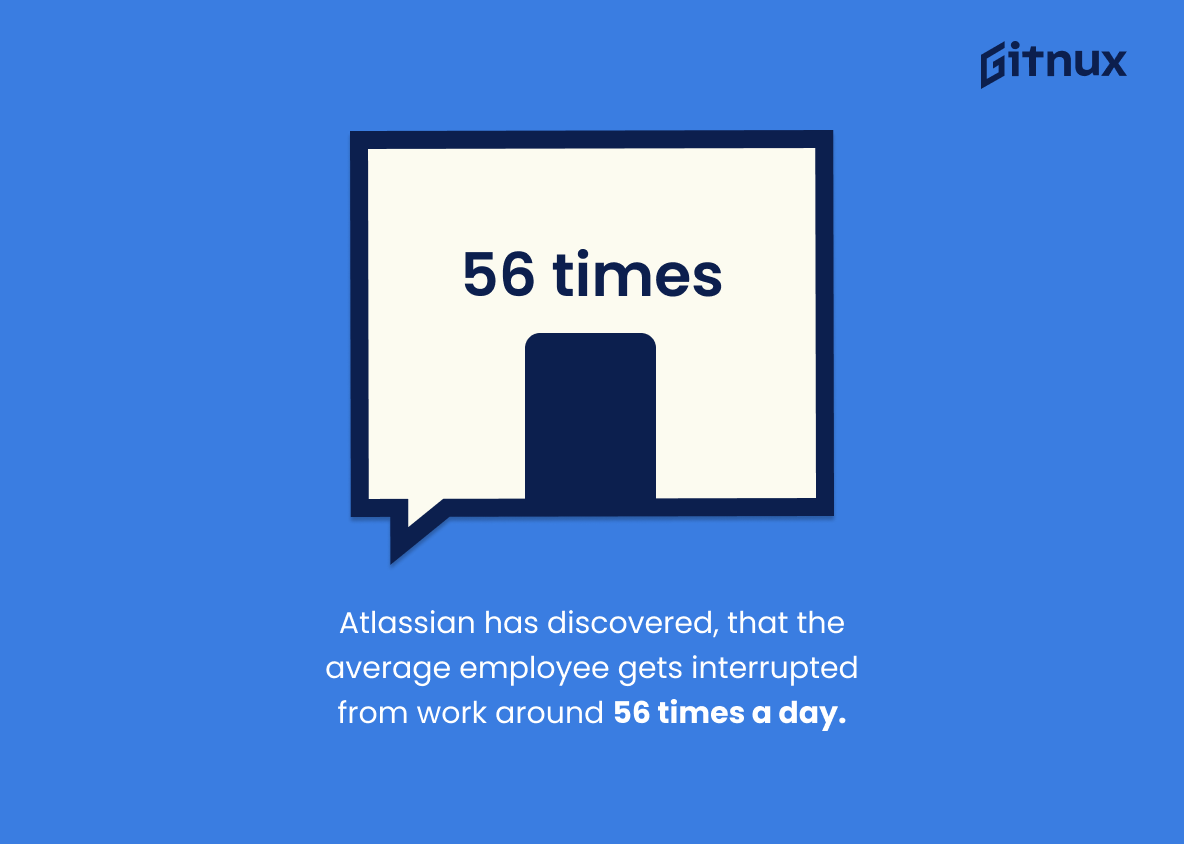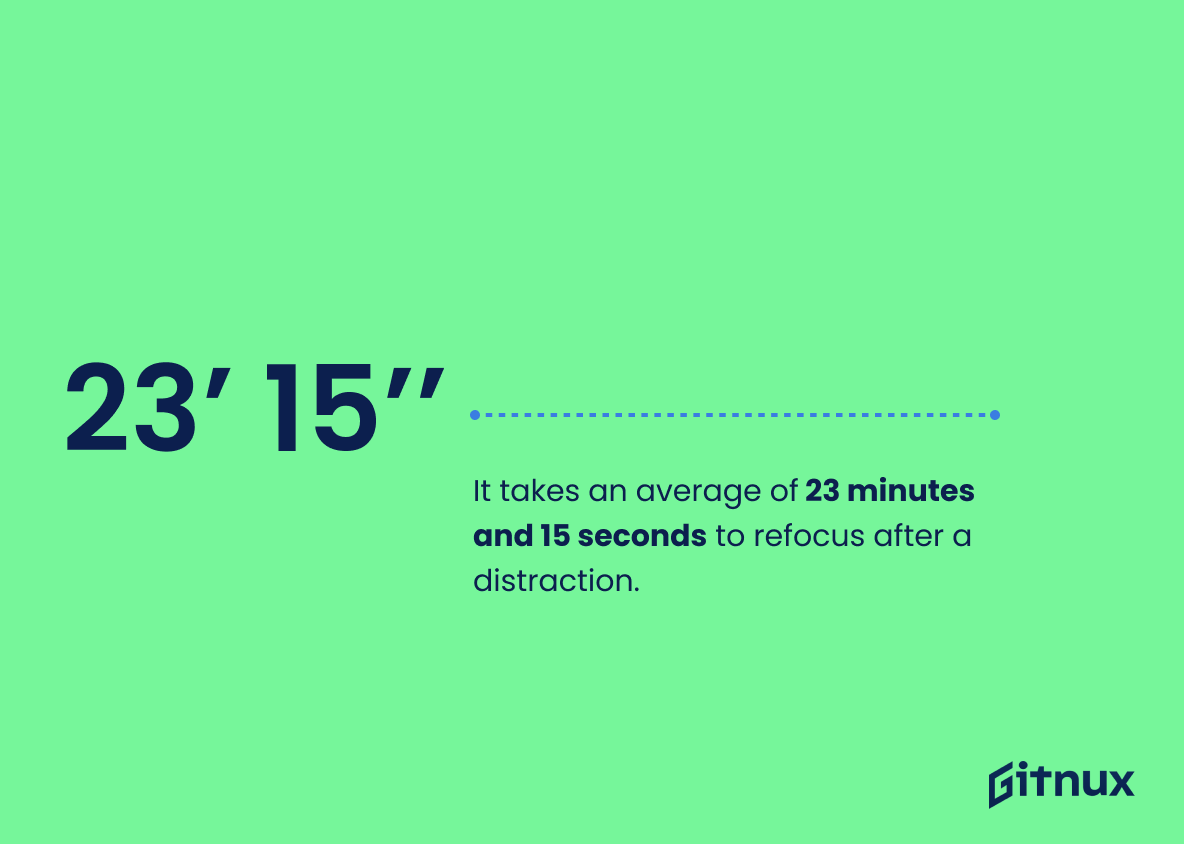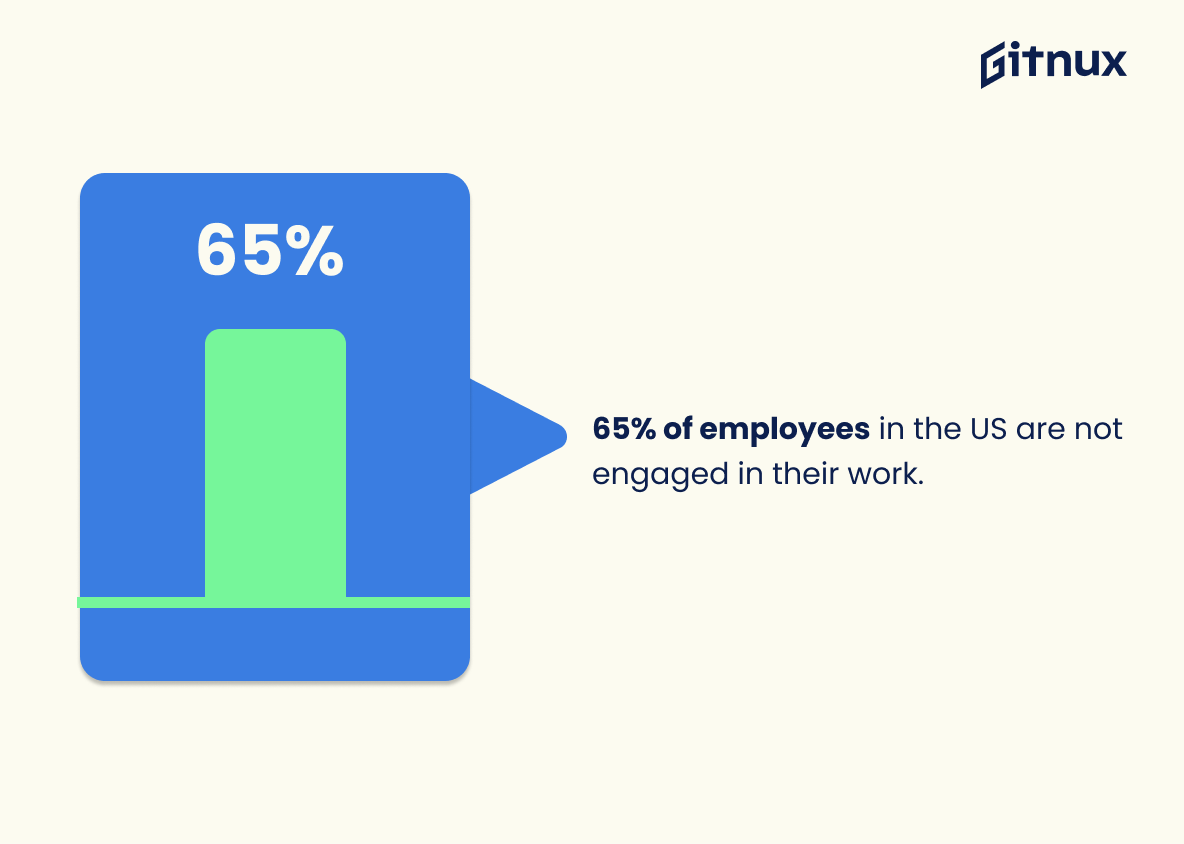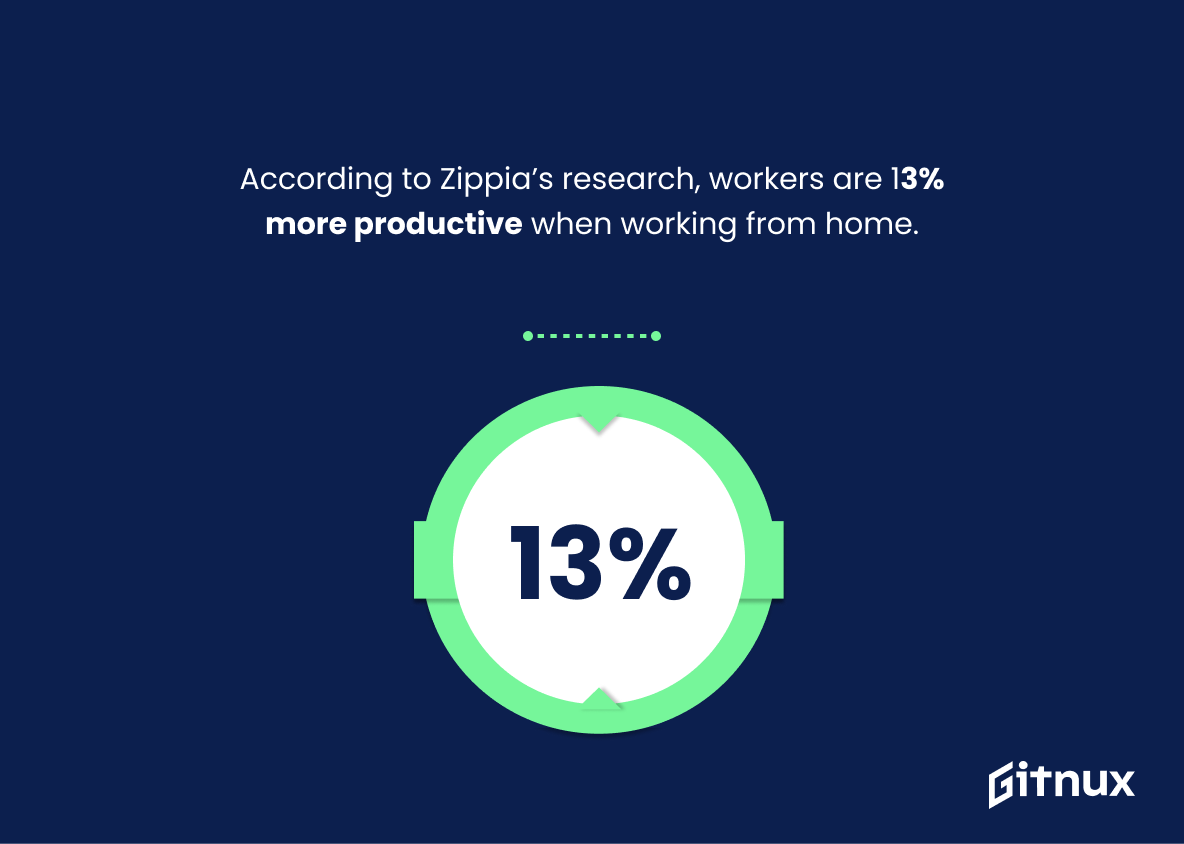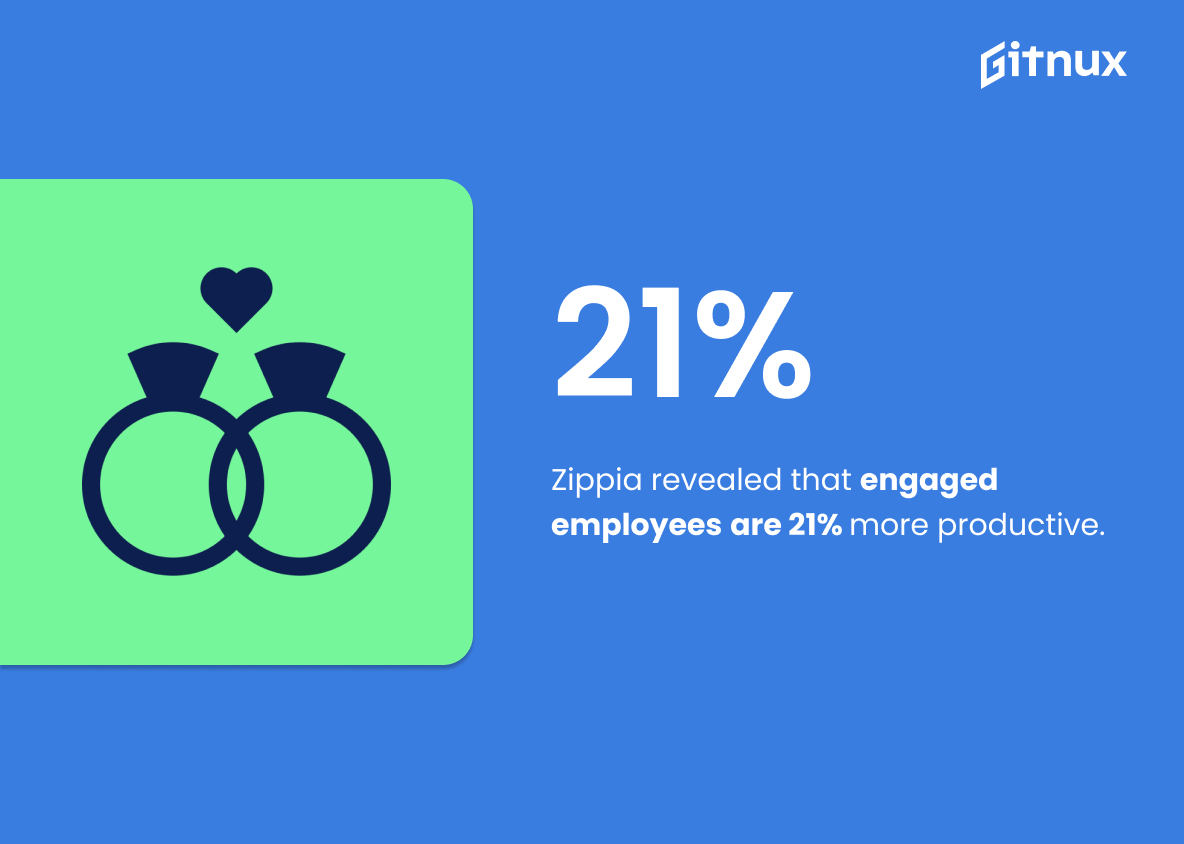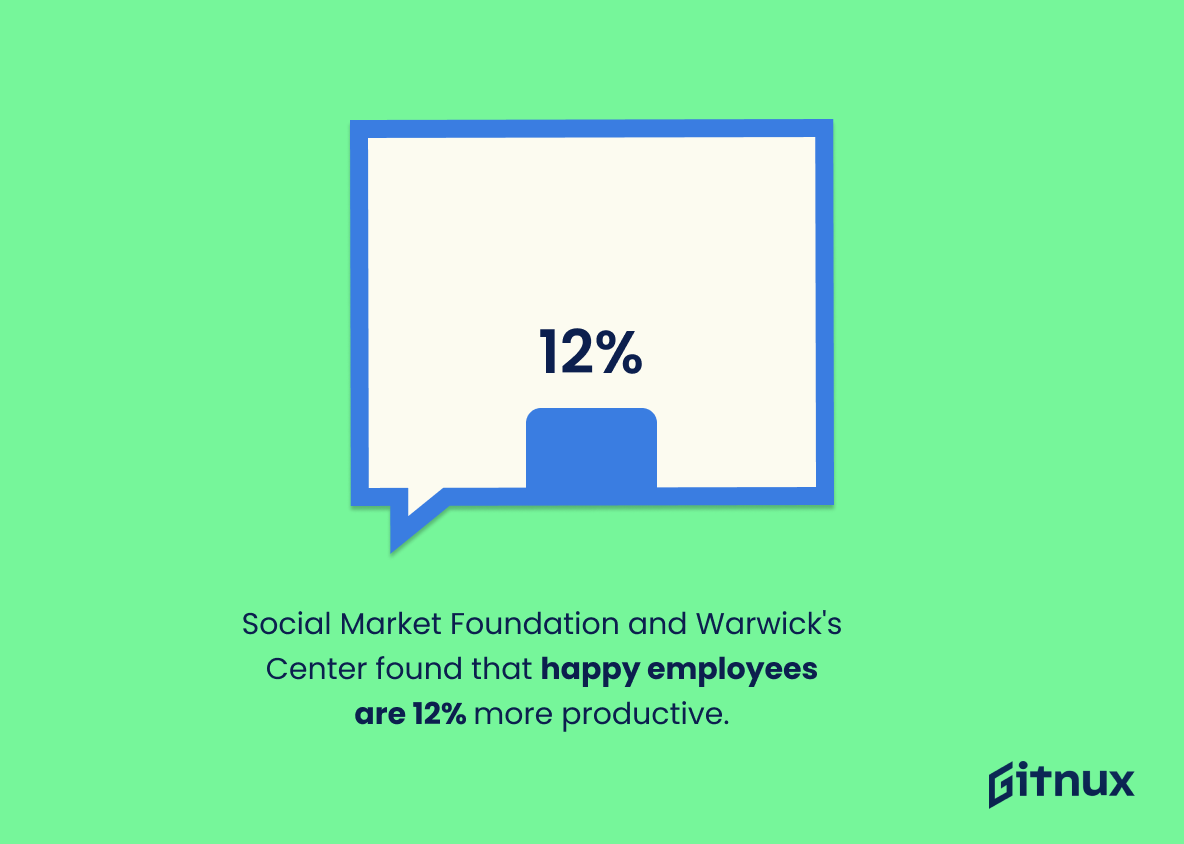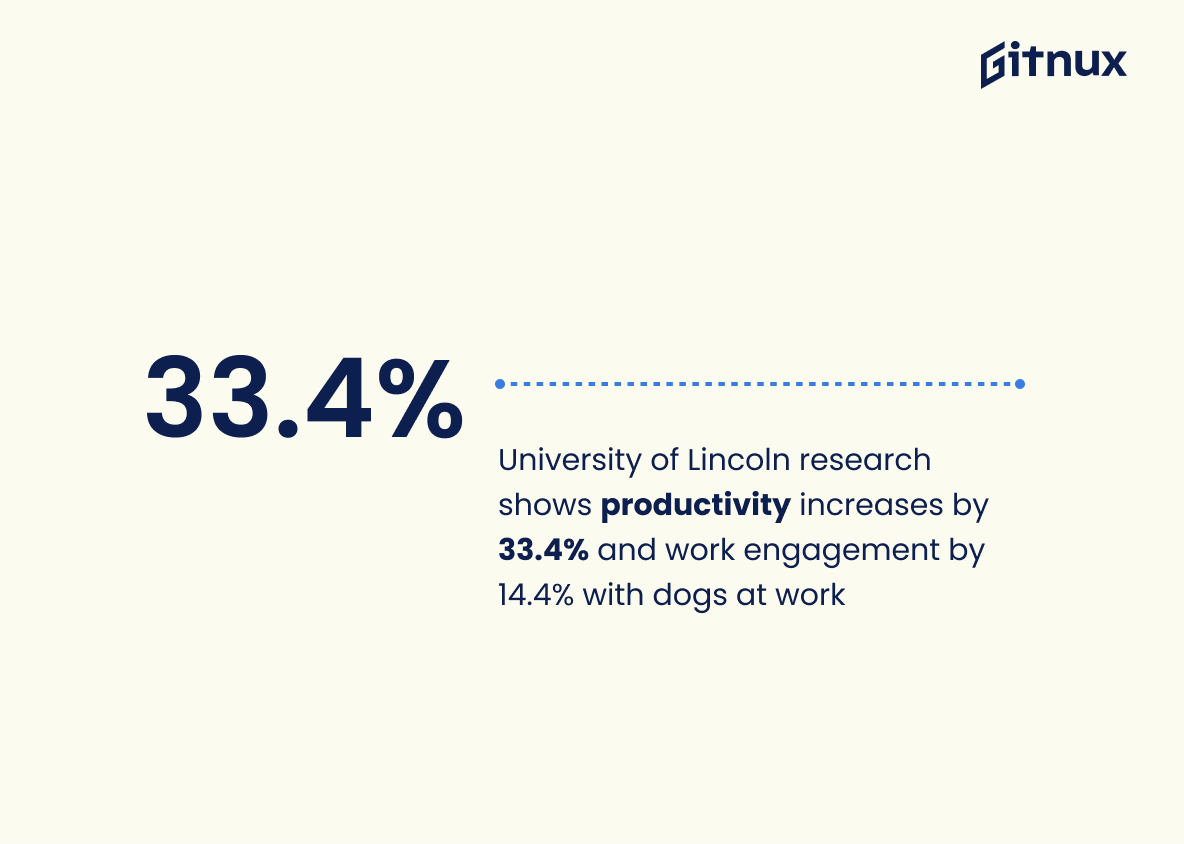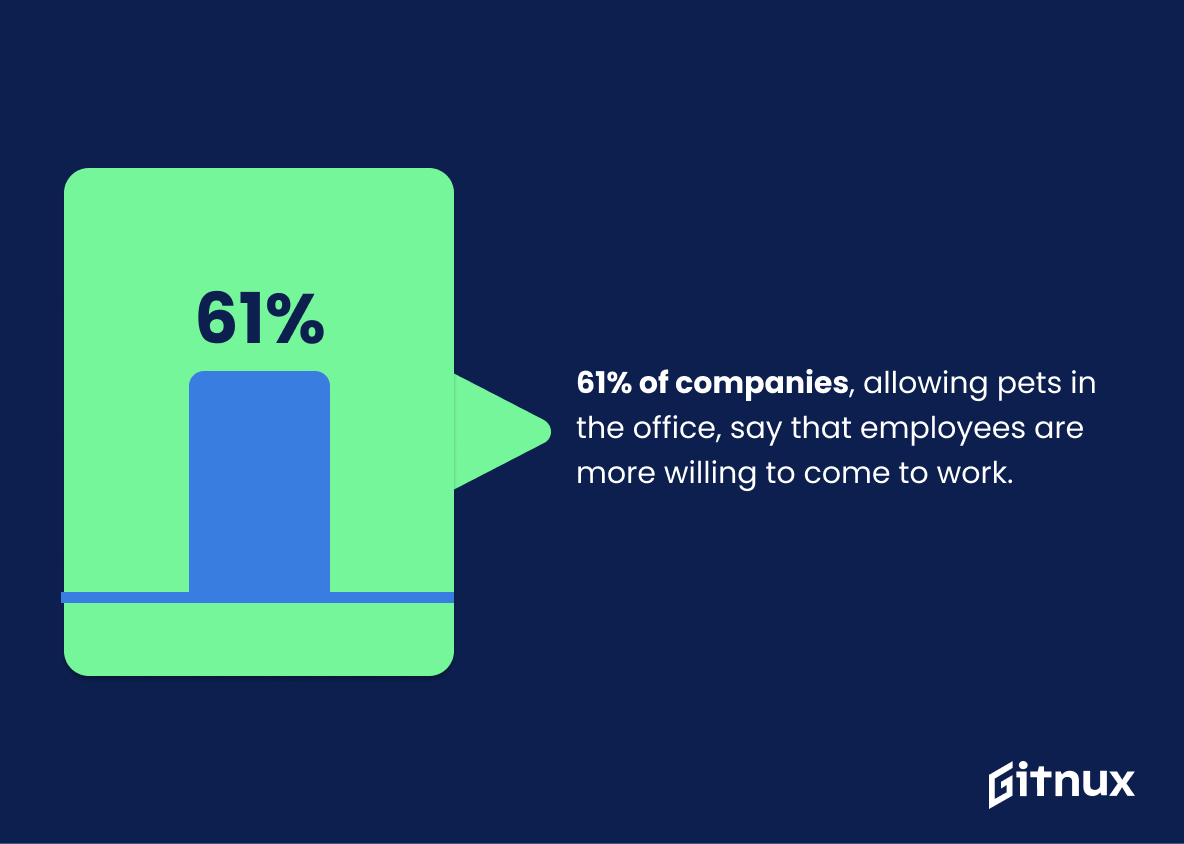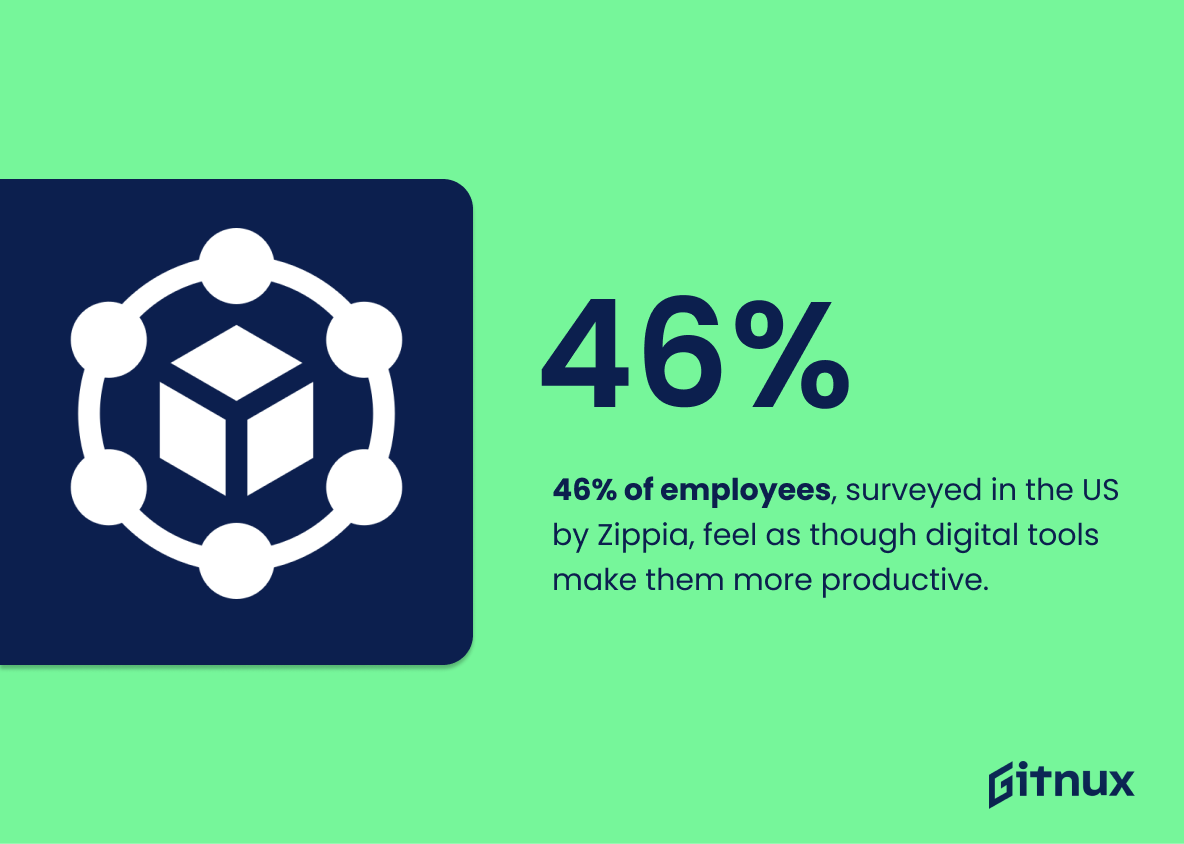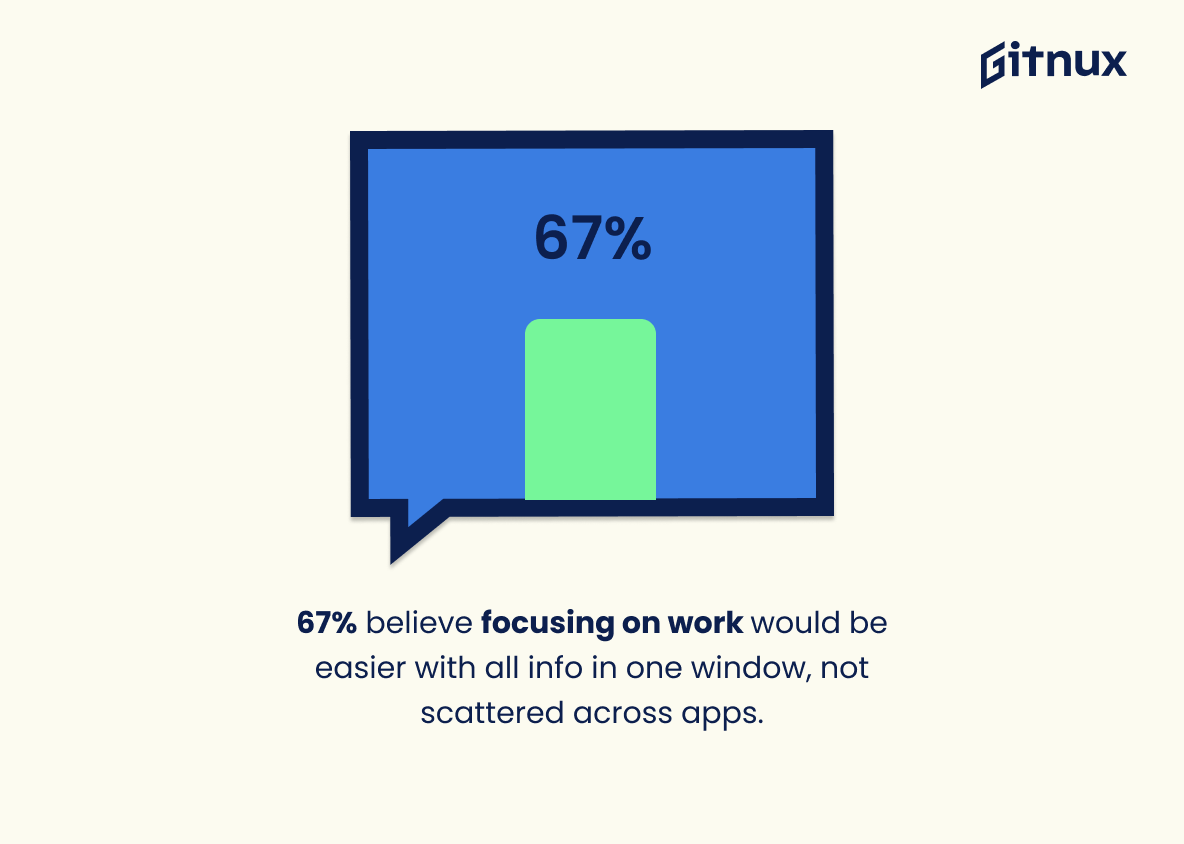Companies around the world are constantly implementing new tools and technologies to help their teams collaborate more efficiently and to increase workplace productivity among employees. Some organizations go further and create pet-friendly policies to allow their teams to bring pets to work and keep everyone happy. Other companies cut down the number of meetings and direct messages and switch to the async communication model.
A good productivity level implies that a person spends around 70-75% of their time working and the rest of the time taking breaks. But that’s only the ideal number because our productivity depends on many factors, such as the working environment, background noise, distractions due to work, personal distractions, stress, room temperature, and lots more.
So let’s look at the latest workplace productivity statistics and see how we can improve our productivity, and what to do when it’s not going so well!
Workplace Productivity: The Most Important Statistics
The average employee gets interrupted from work around 56 times a day, and altogether an employee spends 2 hours per day recovering from these distractions.
It takes an average of 23 minutes and 15 seconds to refocus after a distraction.
71% of managers feel that meetings are unproductive and inefficient. 65% said meetings keep them from completing their own work. 64% said meetings come at the expense of deep thinking.
The state of workplace productivity in 2022
According to new research, conducted in the US by Zippia, the average employee is productive for 2 hours and 53 minutes a day. That’s only 31% of the average 8-hour workday. Most employees feel unproductive because they spend the majority of their workday distracted.
Atlassian has discovered, that the average employee gets interrupted from work around 56 times a day, and altogether an employee spends 2 hours per day recovering from these distractions.
It takes an average of 23 minutes and 15 seconds to refocus after a distraction.
65% of employees in the US are not engaged in their work, a new report by Gallup states. Employees feel indifferent toward their work and want to be inspired for better results.
What increases productivity
So, what exactly helps people to get more productive? According to Zippia’s research, workers are 13% more productive when working from home. Employee productivity in the US has increased by 5% since 2020 due to the Covid-19 pandemic.
Zippia also revealed that engaged employees are 21% more productive. Teams with high employee engagement also experience a 41% reduction in absenteeism, 59% less turnover, and 28% less internal theft.
Employees’ happiness is another key to better work productivity. A study, conducted by Social Market Foundation and Warwick’s Centre on Competitive Advantage in the Global Economy, discovered that happy employees are 12% more productive compared to others.
Another interesting fact, discovered during the latest research, involves the connection between productivity and pets. Most companies still think welcoming dogs (or other pets) into an office will only cause distractions among team members. However, according to the University of Lincoln and their research on this subject, employees’ productivity goes up by 33.4% and overall work engagement increases by 14.4% when their dogs are around.
Companies, which already have pet-friendly policies, agree that this factor makes a positive impact on employees’ productivity and other work-related aspects. A new survey from Banfield Pet Hospital has found, that 61% of companies, allowing pets in the office, say that employees are more willing to come to work, and 42% see increased productivity among staff. 24% of employers say that team members seem happier in the workplace where they can bring pets.
Quite unexpectedly, studies have shown, that music is also an excellent tool for boosting productivity. E.g., 71% of people, surveyed by Robert Half, are more productive at work when listening to music.
Digital tools are crucial for a clear and better-structured workplace. 46% of employees, surveyed in the US by Zippia, feel as though digital tools make them more productive.
Being undoubtedly very helpful in our everyday work process, digital tools can also have a negative impact on our productivity levels. 74% of survey respondents, conducted by Harmon.ie, currently have more than 5 apps open at the same time, and 16% of employees have 15 and more apps open at once. 67% of surveyed believe that it would be much easier to focus on work if they had all the important info in one window instead of all the apps.
What causes productivity to drop?
It’s crucial for your work performance to stay on top of your day and spend your time productively and efficiently. But yet, you can meet plenty of obstacles on your way to better productivity. Let’s discover together, what prevents us from doing the best we can and how can we fix it.
Zippia, an American career expert, has revealed quite disturbing statistics about distractions at the workplace and their negative impact on employees’ productivity. It states that employees spend up to 32% of their time on Facebook, costing employers $28 billion each year. Social media altogether are one of the most common distractions at work, with 47% of employees checking it in the workplace.
The same study revealed, that it takes an average of 23 minutes and 15 seconds to refocus on a task after every little distraction.
Researchers at the University of California, Irvine, discovered, that the average office worker is interrupted or switches tasks every 3 minutes and 5 seconds.
According to Udemy’s report, the top distractions, causing problems with concentration and decreasing in productivity, are chatty co-workers (80%), office noise (70%), and checking smartphones (69%).
Another reason for productivity decrease is stress, as at least 41% of employees surveyed by Zippia, feel that stress leads them to be less productive.
Multitasking is also a bad idea if you want to do your job well, because it can reduce productivity by up to 40%. According to Zippia, 98% of the population can’t or has a really hard time multitasking.
Room temperature has also proven to be linked to workplace productivity. Career Builder found out that 53% of employees are less productive in a colder environment.
Another important aspect of higher productivity at work is the time you spend sleeping. According to the Glassdoor survey, 66% of surveyed employees feel that they would be more productive if they got more sleep.
The last, but probably the most significant cause of the low productivity is meetings. We all know, that meetings are a new must-have in the modern business world, and some managers organize them on a daily basis, or sometimes even run a few of them on the same day. Do you still think that meetings are that popular and productive? Let’s look at the latest statistics!
The average corporate employee spends 4 hours preparing for and attending meetings per week. And 35% of employees agree that the 2-5 hours wasted on meetings each week leaves them with no benefits at all.
University of Northern Carolina surveyed 182 senior managers in a range of industries. 71% of managers feel that meetings are unproductive and inefficient. 65% said meetings keep them from completing their own work. 64% said meetings come at the expense of deep thinking. (Harvard Business Review)The average employee spends 31 hours in unproductive meetings over a month, according to a study by Atlassian.
Workplace productivity and remote work
91% of remote workers believe they get more work done when working remotely, according to TINYpulse survey.
CoSo Cloud study showed similar results, with 77% of participants reporting greater productivity while working off-site.
According to a Hubstaff report, employees who work from home are 52% less likely to take time off work. Remote workers are motivated to work harder, so they continue working from home without calling in sick, and use less vacation and personal time. 86% of employees also claim there are fewer distractions when they can separate themselves from others.
What are the perspectives on workplace productivity?
The latest report by Zippia states that workplace productivity has increased by 61.8% from 1979 to 2020.
86% of employees need to work alone to hit maximum productivity, according to a Hubspot study.
76% of employees in the US believe using company-provided wearable tech to track employees would help to improve productivity.
Supplementary Statistics
Employees’ productivity increases by 13% when they are happy at work.
Workplace happiness is essential for productivity. It highlights the importance of creating a positive work environment where employees feel valued and appreciated. This statistic is a great starting point for a blog post about workplace productivity statistics, as it emphasizes the need for employers to prioritize employee satisfaction in order to maximize productivity.
Teleworkers are an average of 35-40% more productive than their office-based counterparts.
Employees can be more productive when working remotely. It highlights the importance of creating an environment that allows employees to work in a way that best suits their individual needs and preferences. This statistic is especially relevant in the context of a blog post about workplace productivity statistics, as it provides a valuable insight into how businesses can increase their productivity by embracing teleworking.
The average person spends just 2 hours and 53 minutes actually working during an 8-hour workday.
This statistic serves as a stark reminder of how much time is wasted in the workplace, with the average person only spending a fraction of their workday actually working. It highlights the need for employers to focus on improving workplace productivity and efficiency, in order to maximize the time their employees spend on productive tasks.
1 in 3 employees believe that their workplace does not encourage productivity.
Many workplaces are not doing enough to foster an environment of productivity. It highlights the need for employers to take a closer look at how they can create a more productive workplace for their employees. It also serves as a warning that if employers do not take steps to improve their workplace productivity, they may be missing out on the potential benefits of a more productive workforce.
Office workers are interrupted, or switch tasks every three minutes and five seconds.
This statistic is a stark reminder of how easily our attention can be diverted from the task at hand. It highlights the need for strategies to help us stay focused and productive in the workplace.
77% of workers say a clean and organized workspace makes them more productive.
The majority of workers recognize the value of having a tidy and organized workspace, and that it can have a positive impact on their productivity. This is an important point to consider when discussing workplace productivity statistics, as it highlights the importance of creating an environment that is conducive to productivity.
57% of employees say that a complimentary food service boosts their productivity.
Providing employees with food can be an effective way to increase their productivity, making it an important factor to consider when looking to improve workplace productivity.
Background noise is responsible for a 66% drop in employee productivity.
This statistic is a stark reminder of the detrimental effect background noise can have on employee productivity. It serves as a powerful illustration of the importance of creating a quiet and distraction-free work environment in order to maximize productivity.
Employees typically receive an average of 121 emails per day.
This highlights the need for efficient email management strategies to ensure that employees are able to stay productive and focused on their work.
45% of employees think they can work better in a more flexible workspace.
A more flexible workspace could be the key to unlocking greater efficiency and effectiveness from employees. As such, it is an important statistic to consider when discussing workplace productivity and the potential for improvement.
60% of on-the-job distractions are digital (email, social media, texting, etc.).
This highlights the need for employers to take proactive steps to reduce digital distractions and create an environment that encourages productivity. It also serves as a warning to employees to be mindful of their digital habits and to take steps to limit their digital distractions. This statistic is an important part of the conversation about workplace productivity and should be taken into consideration when discussing strategies to improve productivity.
Standing desks can lead to a 46% increase in productivity.
Making a relatively small change to the way employees work can have a dramatic impact on their output. This statistic is a valuable addition to any discussion of workplace productivity, as it provides a tangible example of how small changes can lead to big results.
80% of workers felt that job flexibility positively impacts productivity.
The majority of workers recognize the positive impact that job flexibility has on productivity, and that employers should take this into account when considering how to best optimize their workplace. This statistic is especially relevant to a blog post about workplace productivity statistics, as it provides a valuable insight into how job flexibility can be used to increase productivity.
45% of mid-sized companies saw a 10% increase in productivity after implementing workforce management solutions.
Mid-sized companies can benefit significantly from implementing such solutions, with a 10% increase in productivity being a notable result. This statistic is an important reminder that investing in the right tools can have a positive impact on workplace productivity.
An organized desk increases employee productivity by 32%.
Having an organized desk can have a significant impact on employee productivity, and should not be overlooked when considering ways to increase productivity in the workplace.
Over 40% of businesses agree that allowing employees to personalize their workspace leads to higher productivity.
Businesses recognize the value of allowing employees to customize their environment, and that doing so can lead to tangible improvements in productivity. This is an important point to consider when discussing workplace productivity statistics, as it highlights the importance of creating an environment that is conducive to productivity.
Conclusion
Workplace productivity has certainly increased a lot in the past 40 years, but at the same time, the amount of distractions we encounter at work is getting higher too. The daily usage of instant collaboration tools, endless meetings, multitasking, chatty colleagues, all these factors prevent your team from being more productive and efficient.
Statistics show, that people prefer to work alone and at their own pace for the best results. And this is your job as a manager to provide clear rules for internal communication.
To sum up, we think, that the best way to hit maximum productivity in your company is to switch to the asynchronous working mode. It will give your employees more freedom to work and help them to avoid most part of distractions.
References:
Atlassian: “You waste a lot at work”, cited in January 2023 (Source).
Zippia: “20 Incredible productivity statistics [2023]: average employee productivity in the u.s.” cited in January 2023 (Source).
Harvard Business Review: “Stop the Meeting Madness” cited in January 2023 (Source).
Gallup: “State of the Global Workplace: 2022 Report” cited in January 2023 (Source).
SMF: “Happiness and productivity: Understanding the happy-productive worker”, cited in January 2023 (Source).
Dentons: “Dogs at work? It’s paw-ssible”, cited in January 2023 (Source).
Bandfield: “Survey reveals pandemic pet owners worried about returning to the workplace”, cited in January 2023 (Source).
Washington Post: “Work interruptions can cost you 6 hours a day. An efficiency expert explains how to avoid them.”, cited in January 2023 (Source).
Robert Half: “Most Professionals Like Listening To Music At Work And Are More Productive When They Do, Survey Shows”, cited in January 2023 (Source).
Business wire: “Information and App Overload Hurts Worker Productivity, Focus and Morale Worldwide, According to New Independent Survey”, cited in January 2023 (Source).
Udemy: “2018 Workplace Distraction Report”, cited in January 2023 (Source).
Career Builder: “How much does temperature affect your productivity?”, cited in January 2023 (Source).
PR Newswire: “Two-Thirds Of American Workers Would Be Better Employees If They Got More Sleep, According To Glassdoor Survey”, cited in January 2023 (Source).
TINYpulse: “What leaders need to know about remote workers?”, cited in January 2023 (Source).
CoSo Cloud: “CoSo Cloud Survey Shows Working Remotely Benefits Employers and Employees”, cited in January 2023 (Source).
Hubstaff: “State of Productivity and Management Report 2018 ” cited in January 2023 (Source).
Hubspot: “How to be more productive”, cited in January 2023 (Source).
ZipDo, cited June 2023: Workplace Productivity Statistics
